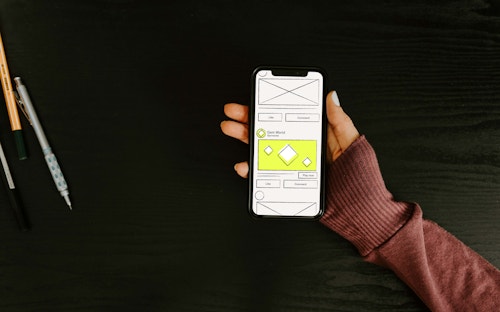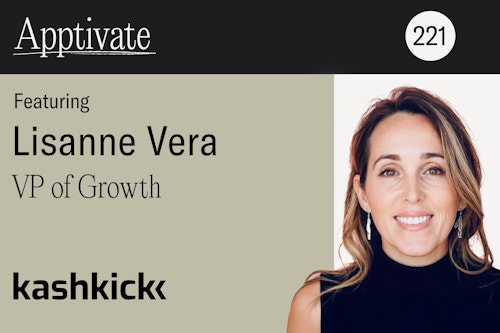How to run brand safe app retargeting campaigns
November 09, 2022

“How do you ensure brand safety when buying mobile ad space for my campaigns?” This is one of the most common questions we get asked by clients and prospects at Remerge. Not only do brands want to avoid their ads featuring alongside irrelevant content, but they do not want to see them beside inappropriate or offensive content either.
Programmatic ad buying continues to grow, with global spend set to reach almost $500 billion by 2022. As mobile businesses make bigger investments in this industry, marketers are starting to pay closer attention to where their advertising partners display their ads. They want full visibility and transparency when it comes to campaign implementation and reporting to understand why performance may not be at the level they expect.
Partnering with a managed demand-side platform (DSP) can help alleviate marketers’ concerns about brand safety and in-app retargeting. In this article we explore how you can keep your brand safe and what to keep in mind when looking for an in-app retargeting partner.
What is brand safety in the programmatic space?
Brand safety is the practice of ensuring branded ads do not appear somewhere that might harm an organization’s reputation, i.e. a place online that does not align with its brand ethics or values. Although no one purposefully strives to place ads in inappropriate places, it can happen, and when it does, it can have a damaging impact.
That’s why brands can be particularly cautious when deciding to launch in-app retargeting campaigns. They want to know exactly where their ads will appear in the mobile ecosystem and how their DSP partner helps mitigate the chance of bizarre or unusual ad placements.
Why is a brand’s reputation important?
Advertisers are constantly fighting for new audiences and it’s easy to see how pouring money into programmatic advertising could be useful. It’s automated, so identifying and buying ad space is faster than traditional methods. It also allows for granular audience segmentation, meaning marketers can reach specific audiences at specific times.
However, automation means putting faith in the technology behind this process. One wrong ad placement can lead to a social media frenzy or end up on a news site within seconds — potentially causing irreparable damage to a brand. After all, it only takes users 50 milliseconds to form an opinion of a brand online. Companies may have lost a customer forever if that person’s first interaction with their brand is associated with something like fake news. Building a trustworthy brand takes a long time, but it only takes seconds to jeopardize its reputation.
« Clients are demanding having some sort of safeguard or safety net in place of where their content is running »
Phil Golas, VP of Technology and Activation at Spark Foundry
How do agencies tackle the problem?
We recently spoke with Phil Golas for our Apptivate podcast. Phil is the Vice President of Technology and Activation in Ad Operations at media agency, Spark Foundry. We discussed brand safety and on top of recognising it was an increasingly hot topic, Phil reinforced that no brand wants to become the next business to appear alongside an offensive ad:
“Everyone wants their ad to be seen but also not seen against certain content, so it’s a very touchy subject. But it's always one top of mind and one that's always evolving. We're responsible for ensuring brands are running in ad-safe content.
“Clients are demanding having some sort of safeguard or safety net in place of where their content is running.”
Your checklist: How you can manage brand safety on mobile
Get started with in-app advertising
From the off, in-app advertising offers a layer of brand safety. Your mobile marketing partner will only run ads in apps that are approved and available in the Google Play and App Stores, meaning your brand will not appear on other potentially suspicious apps or mobile websites.
Figure out what brand safety means to you
To manage brand safety, you must first define what brand safety looks like for your brand. What kind of apps do you want to avoid? Content that some brands deem ‘unsafe’ could be part of your strategy, such as political or gambling apps.
Avoid blocklist publishers
It’s important to avoid ‘blocklist’ publishers. A blocklist publisher is an app that is considered spammy or one which may host malware. Many third-party companies supply and update universal blacklists to help brands navigate the world of unsafe publishers.
Some brands may find themselves torn or unsure whether to use these types of publishers as lower pricing models can appear tempting. But actively linking your brand with these publishers is often a bad idea, especially if you’re planning to build a reputable brand. Be mindful that risk thresholds can change for your brand. You should regularly revisit your blocklist list to ensure you keep your brand’s reputation intact.
Make monitoring your campaigns in real-time habitual
Monitoring your ads can help you notice any unusual ad placements. Make a habit of monitoring your campaigns and you’ll be able to amend campaign settings in real-time to minimize any further damage to your brand.
Always plan for the worse outcome
Spend time with your communications team to build a plan of action should your reputation be compromised. This ensures you can limit any damage quickly and effectively.
Work alongside a DSP partner you can trust
DSPs offer you better reach and ad buying capabilities. They are also more efficient if you are trying to tap into multiple ad exchanges. On top of this, a DSP will manage your brand safety risk by following industry guidelines (such as those outlined by the Interactive Advertising Bureau) and implementing content verification processes.
It’s important to work with a DSP you trust. Do your research by reading reviews and case studies and asking them questions like:
- How do you filter out undesirable apps?
- What third-party data integrations are available?
- How granular are the reports you provide?
Identify a DSP that aligns with your campaign goals. For example, if you have a game and would like to run in-app retargeting campaigns, find a DSP with mobile-gaming specific knowledge. If your product is niche, you’ll require a partner that understands the industry inside out.
How does a DSP ensure brand safety?
Blocklists certain types of publishers for you
You don’t need to worry about creating a publisher blocklist - a DSP will do that for you. A DSP will have a master blocklist to help identify publishers where your ads should not appear.
At Remerge, we use a set of tools to accommodate advertiser wishes and optimize campaign performance. For instance, we can blocklist on a granular level to exclude specific publisher apps, publisher content categories, and generic verticals for our clients’ retargeting campaigns.
Reaches the right app users
Alongside offering customers refined targeting and enhanced security, be sure to pick a DSP with high-quality and a large inventory. A high inventory volume prevents the concentration of impressions for single publishers and allows a DSP to pivot away from blocklisted publishers faster.
Runs native ads
The native ad format matches both the form and function of the user experience of the app where the ad is placed. These ads seamlessly integrate with the content already in the app, which means it is easier to achieve brand safety and craft the most relevant ad message. Native ads are a great way to add scale to your campaigns and retarget users through a more engaging channel.

Prevents mobile ad fraud
Mobile ad fraud is the attempt to defraud advertisers, publishers or supply partners, by exploiting mobile advertising technology. Fraudsters aim to steal from advertising budgets, which can sometimes lead to ads appearing in the wrong places.
A DSP will have an automated fraud detection tool for practises click spamming and click injection as a default. In this case, a publisher is automatically blocklisted if a click threshold value is reached within a certain time period.
Also, a DSP will use data directly from a Mobile Measurement Partner (MMP) to run retargeting campaigns. An MMP tracks users who have installed an app and their in-app activity. By targeting users based on in-app activity that looks legitimate, DSPs reduce the chances of buying ad space for fraudulent installers.
Gives you access to real-time reporting features
Mobile marketing campaigns move fast. That’s why it’s essential to analyze campaign progress as and when it’s happening. A DSP can give you access to a dashboard filled with all your live ad placements. Remerge sends all ad placement impressions and clicks in real-time to your chosen MMP. You can access a full breakdown of this data in your MMP dashboard.
Join our newsletter





